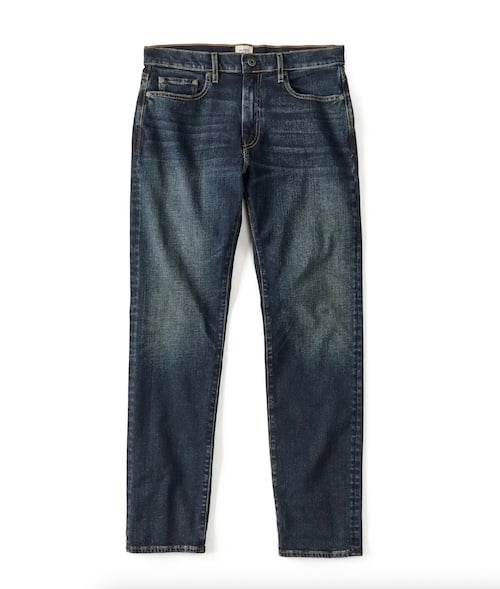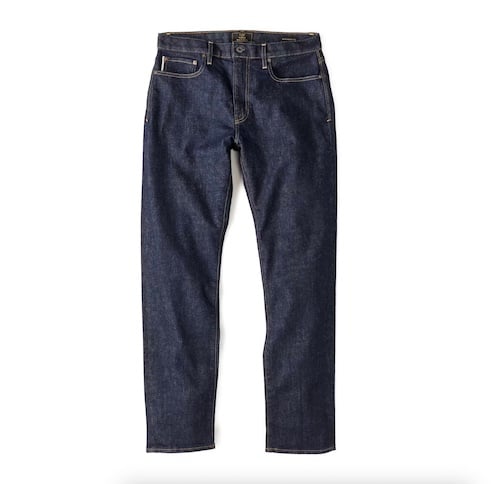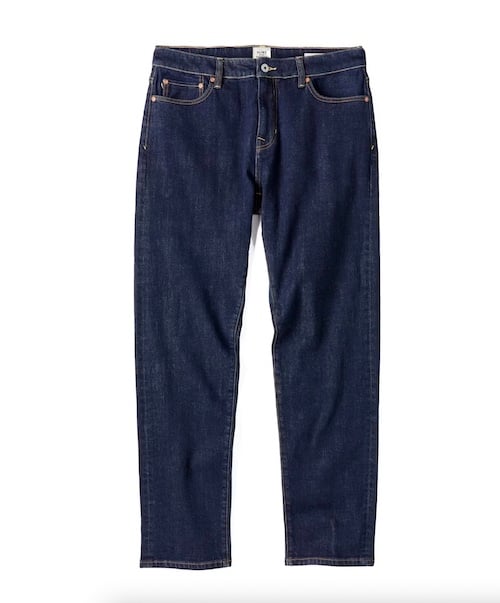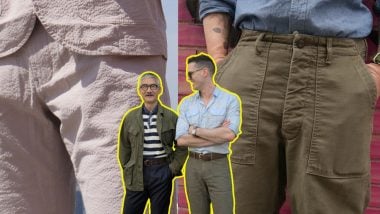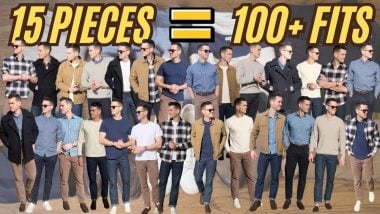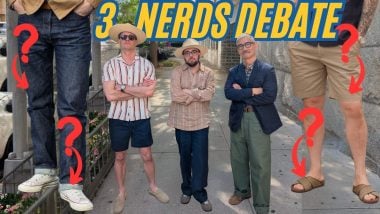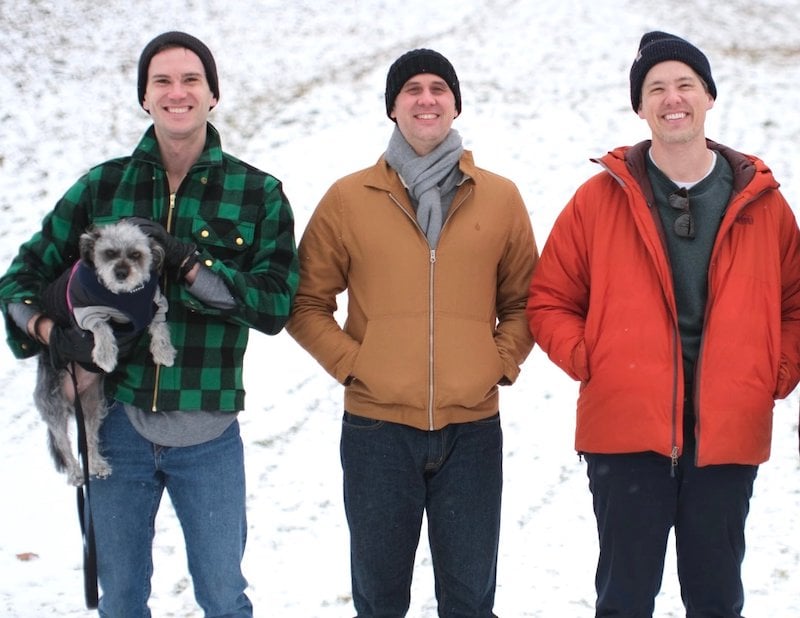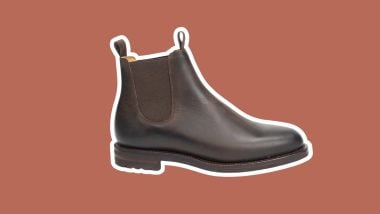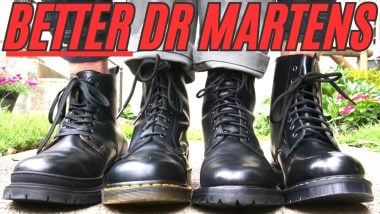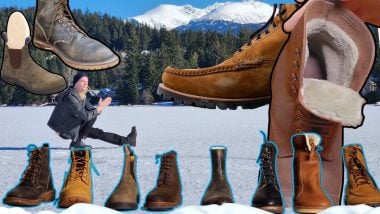Flint and Tinder Jeans Line-Up: All-American vs. Japanese vs. Everyday Selvedge
If you like the extra durability and artistry of quality denim but you don’t love how rigid they tend to be, you’re in luck. Today, we are looking at Flint and Tinder’s denim lineup: the All-American Stretch jeans, the Japanese Stretch Selvedge jeans and the ones they just call Stretch Selvedge jeans — those ones are made in China, but they come in the most fits and the lowest price, so you pretty much get to prioritize whatever you want from stretch jeans.
Before we get into what differentiates them all, let’s start with what you’re probably here for: an overview of what I like and don’t like about each of the three pairs.
Editors’ Note: Huckberry sent me these for review, but all the opinions in this video are mine and mine alone. I did not share this content with Huckberry prior to publication. They will see this when you do.
Pros & Cons: All-American Stretch
A good in betweener, these jeans offer solid value and comfort, so long as you aren’t fussed about whether it’s selvedge denim.
What I liked
- Excellent Comfort: The stretch makes them comfortable for all-day wear right away.
- Different Kinds of Stretch: Each model has a different composition in case there’s one you prefer
- Great Fit Options: Available in Slim, Straight, and Athletic Tapered cut to suit different preferences and body types.
- 3 Inseam Lengths: 30, 32, and 34
- Quality Construction: Features like YKK zippers, branded hardware, and a chain-stitched hem point to good quality.
- Made in the USA: Cut and sewn in Los Angeles, CA, and El Paso, TX.
- Versatile Style: A classic look that works for many occasions (even a last-minute Ren Faire costume!)
- Proven Durability: My older slim-fit pair has held up well for over a year
Cut, sewn, and washed in Texas, these jeans come in three fits and a fabric designed to retain its shape while providing comfortable stretch.
Downsides not deal breakers
- Zipper Fly: Uses a YKK zipper. While convenient, some denim purists strongly prefer a button fly
- Not the Most Modern Fits: At the time of writing, this model doesn’t come in the high rise, full legged “Classic” fit that’s more in vogue
- No Raw Version: If you want to do your own fades, you’re out of luck
- Not Actually 100% American Made: The denim itself is made overseas, so “All American” is a bit of a misnomer
- Incomplete Fabric Information: We don’t know where the denim’s made or how many ounces it is
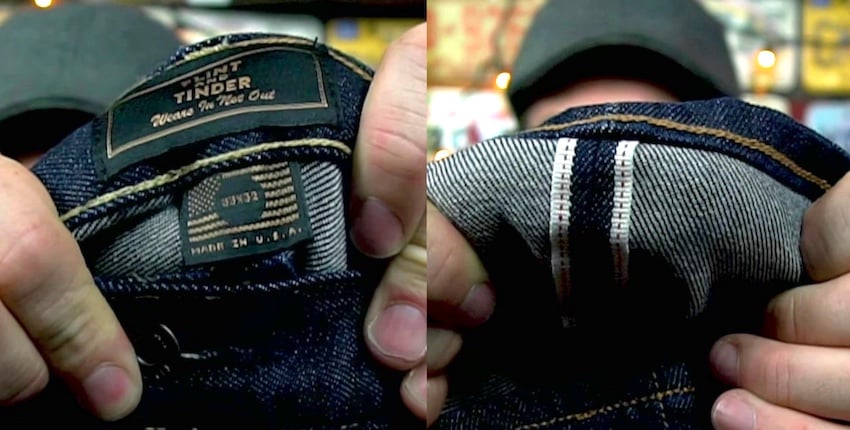
Pros & Cons: Japanese Stretch Selvedge Jeans
This is their most premium model: not only is it selvedge and made in the USA, but the fabric comes from the global headquarters of premium denim.
What I liked:
- Well Known Japanese Denim: Uses 12.5 ounce selvedge denim sourced from the renowned Kaihara Mills in Japan
- Substantial Feel: The heavier weight denim feels durable and has a quality hand-feel, distinct from the All-American Stretch
- Made in the USA: Sewn and finished in Texas
- Potential for Great Fades: High-quality selvedge like this is known for developing unique wear patterns over time
- 3 Inseam Lengths: 30, 32, and 34
Sourced from a world famous Japanese mill over a hundred years old, this denim deftly balances comfort, durability, and artistry.
Downsides not deal breakers
- Higher Price Point: At $198, these are a step up in cost compared to the All-American Stretch
- Limited Fits: These only come in a Straight cut for now
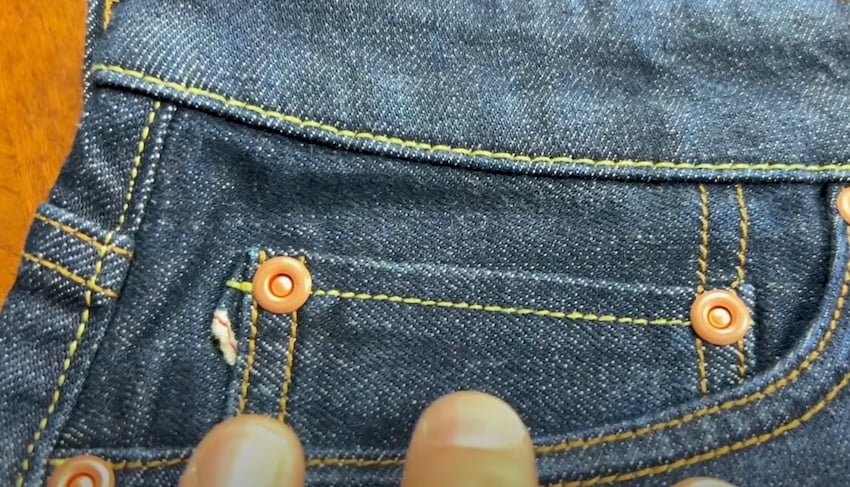
Pros & Cons: Stretch Selvedge Jeans
The best value of the three jeans I looked at, which is impressive given that they’re selvedge.
What I liked
- Affordable Selvedge: At $98, it’s a great entry point into the world of selvedge denim
- Soft and Comfortable: Noticeably softer feel right out of the bag compared to typical selvedge, thanks to the stretch and lighter weight
- Lighter Weight: Uses an 11.7 ounce fabric, making it comfortable for warmer weather or those who prefer less rigid jeans
- Widest Range of Fits: No one can complain about the fits on offer here; you get four to choose from, including the newer “Classic” fit.
- 3 Inseam Lengths: 30, 32, and 34
With more fits, colors, and inseams than any other selvedge jeans from this brand, Flint and Tinder offers solid value for under $100.
Downsides but not deal breakers
- Made in China: Unlike the other two pairs reviewed here, this model is manufactured in China
- Mysterious Fabric: No information on who makes the fabric, something real denimheads tend to prefer
- Zipper Fly: Consistent with the Flint and Tinder line, it features a zipper, not a button fly
- Lighter Fabric: While comfortable, the lighter 11.7 ounce denim might feel less substantial to those used to heavier selvedge

How I Tested Them
I’ve regularly worn the All-American Stretch in my trusty Slim fit for over a year. I also got the Straight fit in black a couple of weeks ago, and I’ve peppered them into my daily wear over the past several weeks.
I really wanted to test out the cut difference because, let’s face it, trends change. Slim fit was the dominant style for a long, long time. While it’s still popular, jeans are trending to a little bit looser cut now. So I have a pretty good feel for how they both fit.
Funny story: I actually used the Slim pair recently as part of a low-effort “costume” for the Renaissance Faire.
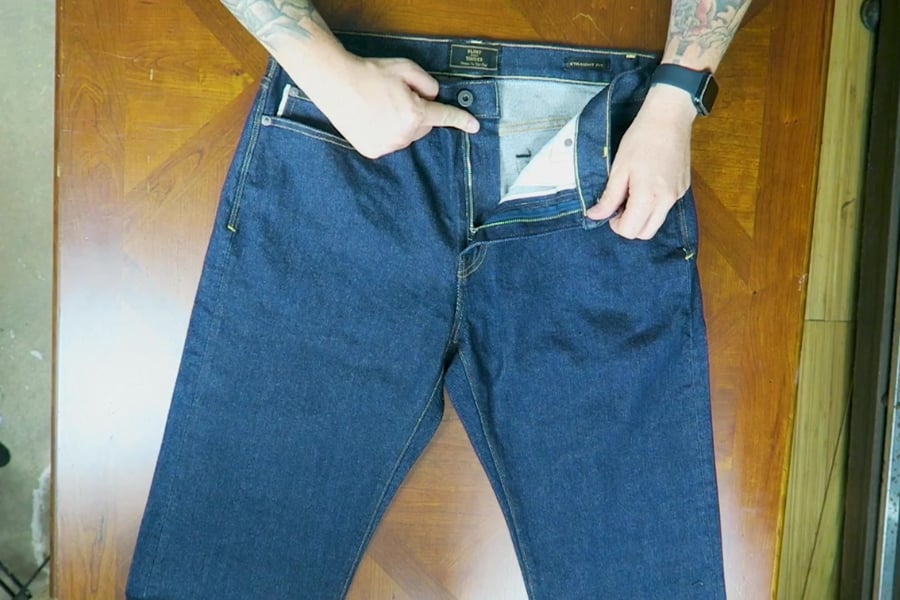
Overview
Flint and Tinder has covered a lot of weights and styles in their lineup of stretch jeans, each coming at a different pricepoint depending on the source of the denim and the location of the construction.
It’s worth pointing out that all these jeans feature a zipper fly (YKK), not a button fly, which is more commonly found on selvedge denim jeans because denimheads usually prefer that more old fashioned (and harder to break) construction.
Personally, I’m fine with either. I appreciate the heritage look of a button fly, but I definitely prefer the convenience of a zipper when nature calls.
Two of the three jeans are selvedge denim, a type of denim woven on antique shuttle looms instead of the more commonplace projectile looms.
Further Reading
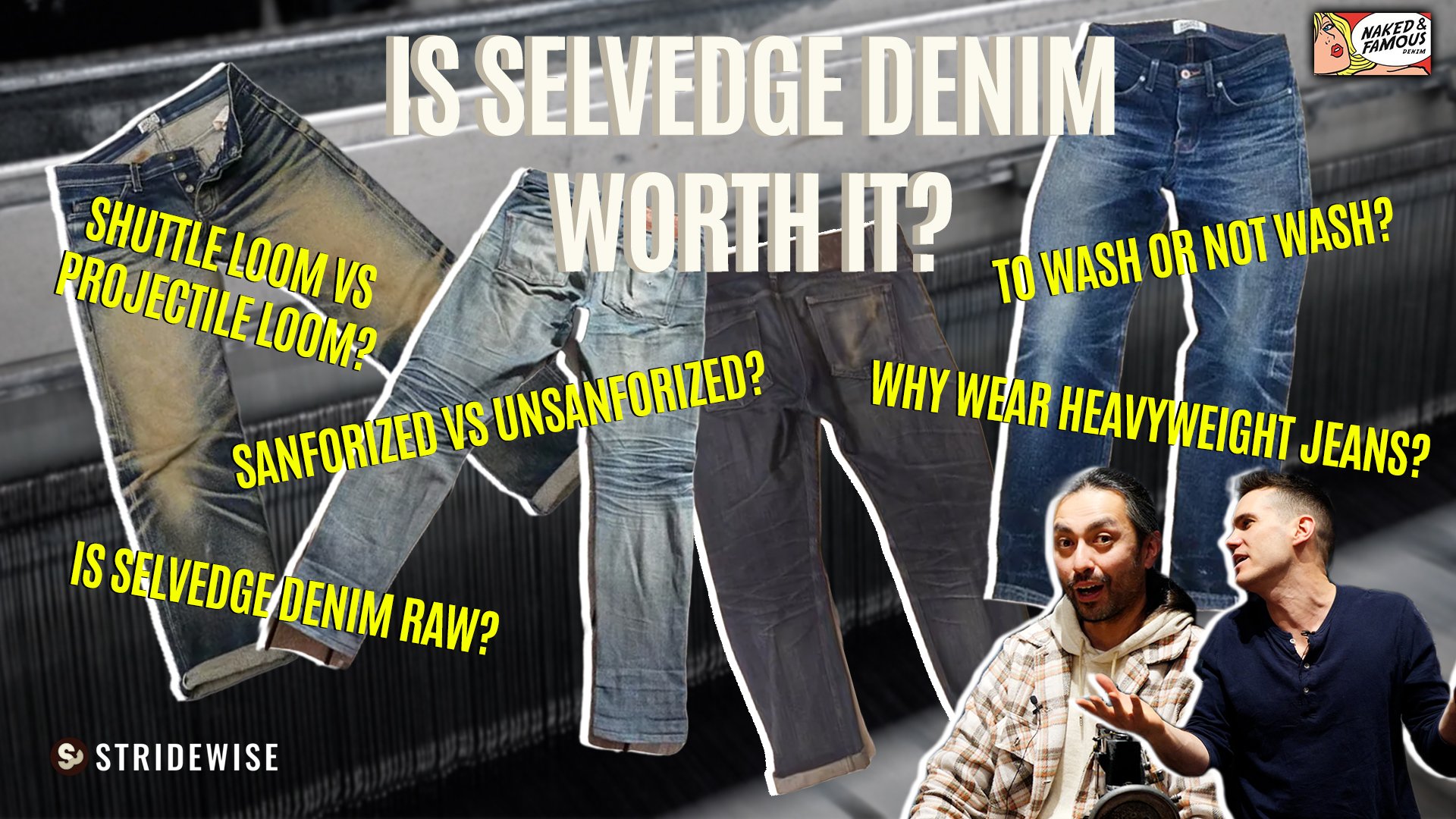
What is Selvedge Denim? A Complete Guide to Looms, Fades, and Sanforizing
We met up with selvedge denim expert Bahzad Trinos for tips on buying your first pair. Learn more →
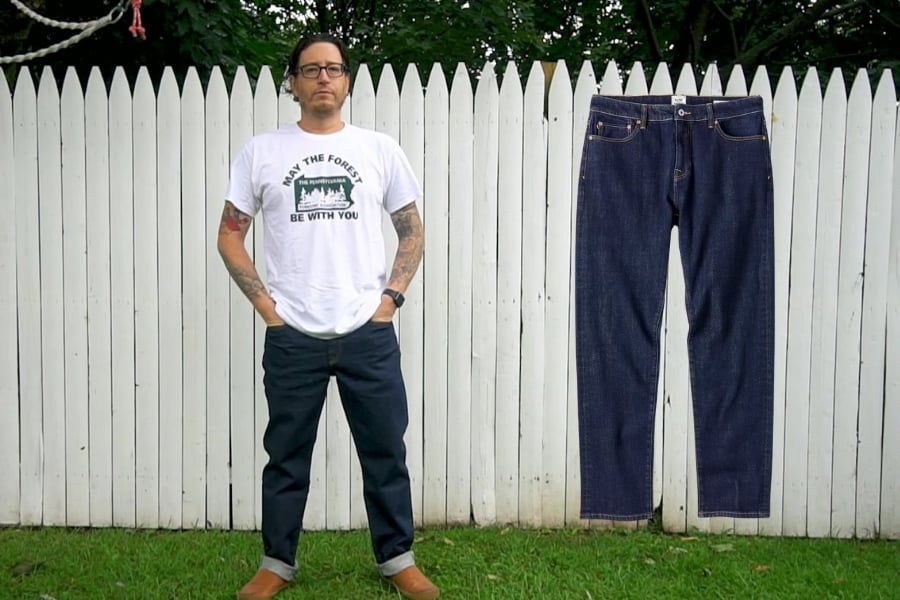
Flint and Tinder Stretch Selvedge Jeans:
- Price: $98 USD
- Cut Reviewed: Straight Fit
- Fabric: 11.7 ounce Stretch Selvedge Denim
- Details: Selvedge ID on outseam and coin pocket, YKK Zipper Fly, Flint and Tinder branded hardware, suede back patch
- Origin: Made in China
This is the $98 jean, and it’s made in China. They are definitely softer than most selvedge denim. 11.7 ounce fabric makes them the lightest selvedge denim jeans that I own (my previous lightest was 12 or 12.5 ounce). They feel a bit thinner, but that contributes to the softness.
With more fits, colors, and inseams than any other selvedge jeans from this brand, Flint and Tinder offers solid value for under $100.
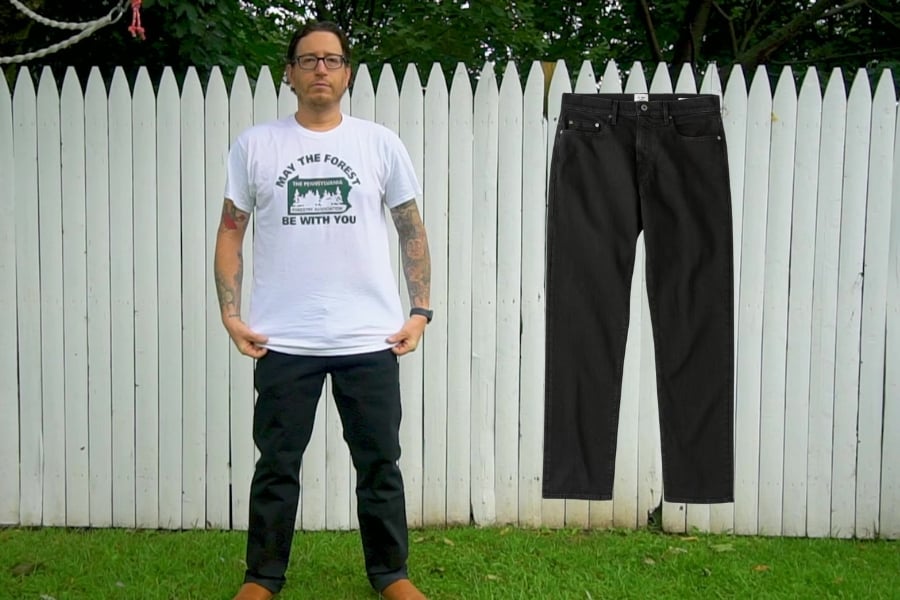
Flint and Tinder All-American Stretch Jeans:
- Price: $158
- Cut Reviewed: Straight and Slim
- Fabric: 95% Cotton, 4% Polyester, 1% Spandex; weight not disclosed
- Details: Chain stitch hem, YKK Zipper Fly, Flint and Tinder branded rivets and button, suede back patch
- Origin: Made in the USA (Cut and sewn in Los Angeles, CA & El Paso, TX); Unclear where the denim itself is from
- Colors: Available in eight different colorways (at the time of writing)
The All-Americans are the odd ones out: they are not selvedge denim. They also don’t disclose how many ounces the fabric is, but I can tell you they feel heavier than the other two.
Cut, sewn, and washed in Texas, these jeans come in three fits and a fabric designed to retain its shape while providing comfortable stretch.
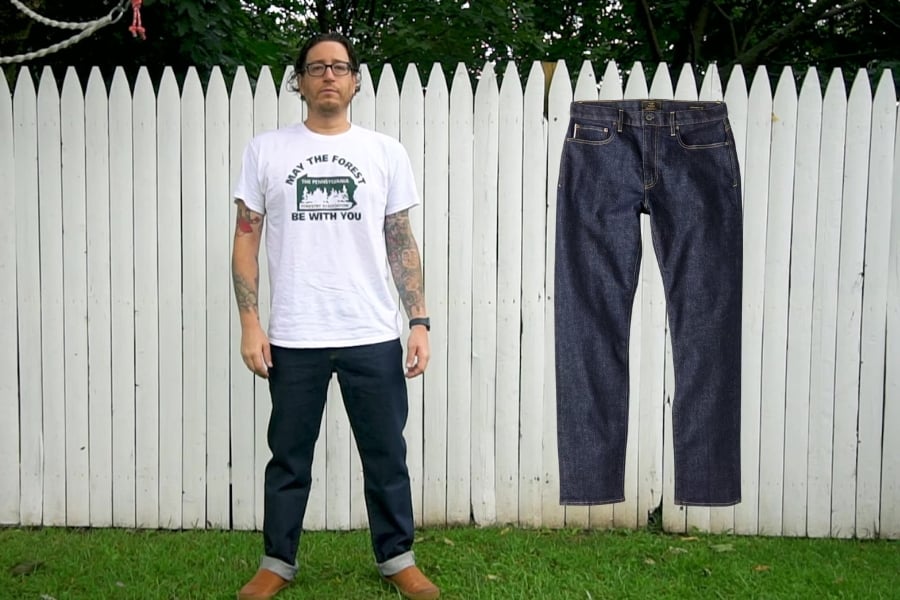
Flint and Tinder Japanese Stretch Selvedge Jeans:
- Price: $198
- Cut Reviewed: Straight Fit (also available in other standard F&T cuts)
- Fabric: 12.5 ounce Japanese Selvedge Denim from Kaihara Mills (98% Cotton, 2% Polyurethane)
- Details: Selvedge ID on outseam and coin pocket, unique silver-toned rivets (with copper posts), YKK Zipper Fly, Flint and Tinder branded button, American flag tag, suede back patch.
- Origin: Denim sourced from Japan, Sewn and finished in Texas, USA.
- Colors: Available in four different color options (at the time of writing).
Finally, Japanese selvedge denim sewn in America. This is a 12.5-ounce denim, so it is a little bit thicker than the others.
Just touching it for the very first time, the material feels a little bit rougher than the everyday version, which is what folks expect from Japanese selvedge: character. Don’t worry about it being uncomfortable; it softens with wear and washes anyway, and this roughness is a feature, not a bug.
Sourced from a world famous Japanese mill over a hundred years old, this denim deftly balances comfort, durability, and artistry.
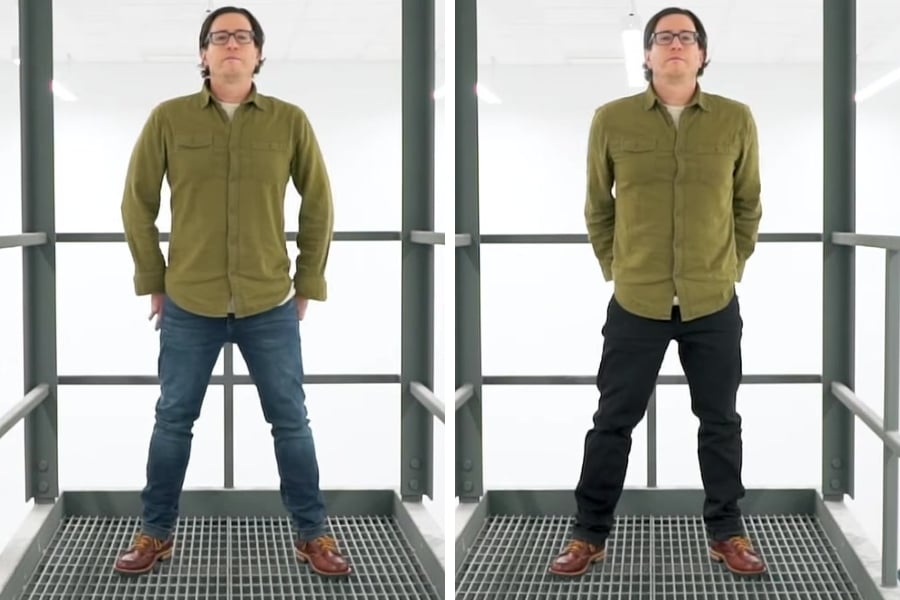
Fits: Flint and Tinder Jeans
- Japanese Selvedge: Straight fit
- The All-American Stretch Denim: Athletic Tapered, Straight, and Slim
- Stretch Selvedge: Straight, Athletic Tapered, Classic, and Slim
As trends shifted back towards slightly looser fits, I found myself moving away from purely slim cuts. I was never a huge fan of truly relaxed-fit jeans. I always preferred a classic “regular fit” — think Levi’s 501s, 505s, or maybe the slightly tapered 527s back in the day.
When I eventually got into Levi’s 511s (which are slimmer), that led me directly to the Flint and Tinder All-American Stretch in Slim Fit, as they had a very similar vibe.
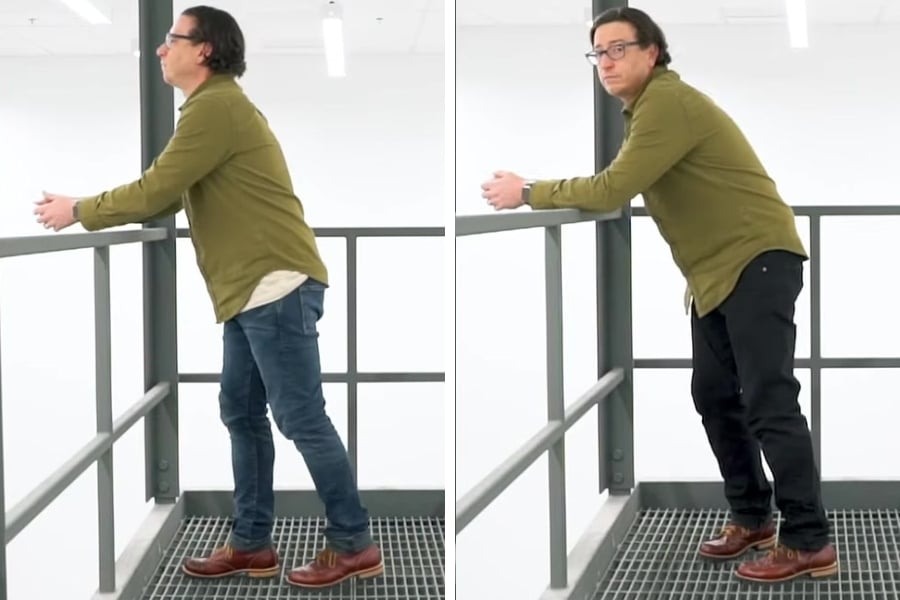
I want to be clear: the HB Slim fit isn’t the same as a skinny fit. For a lot of brands, their “slim fit” ends up being skin-tight. But these jeans are only snug where it should be, and don’t feel restrictive — especially because, of course, this fabric stretches.
The Slim fits much like my old favorite 511s.
On the other hand, the Straight fit has significantly more room throughout the leg, both visually and by feel. The extra room is especially noticeable when wearing boots, which is my primary reason for switching to a straight fit style.
Wearing boots with slim-fit jeans can look awkward (I do not tuck my pants into my boots). The outline of a wider boot shaft can create a visible and awkward bulge. The straight fit gives me a cut I’m still very comfortable with and provides a wider leg opening that accommodates those wider boot shafts.
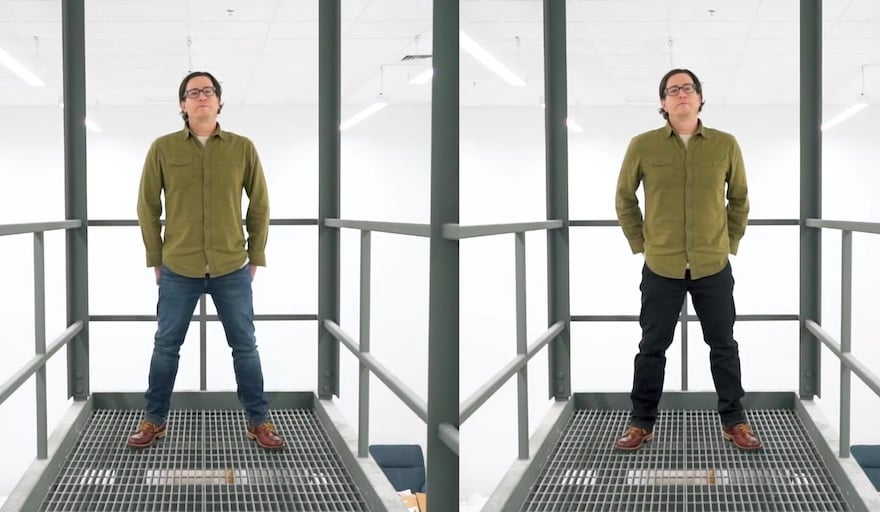
The HB Fit
You might see HB fit in sizing charts on Flint and Tinder jeans, a new system that Huckberry has implemented across its house brands. The idea is that once you’ve identified your size in a specific cut within the HB fit system, that size should fit consistently across the board — no more checking size charts on every single garment.
Of course, the cut of the jeans, whether that be a Slim fit or Straight fit, will make an impact on the silhouette and roominess. But they’re all going to fit the same across the board. It’s a pretty cool move by Huckberry to simplify sizing.
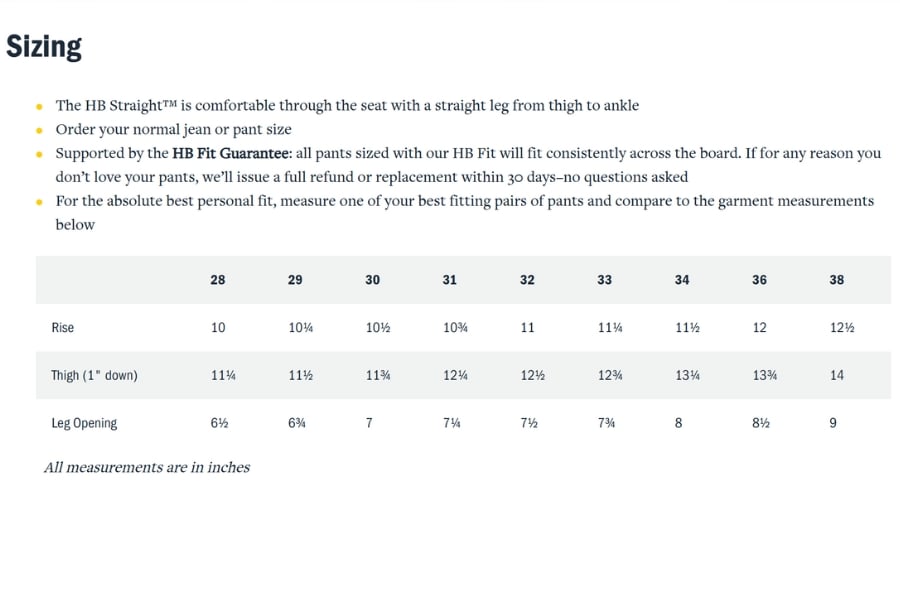
Just note that most guys don’t know their real size: almost every brand on Earth, including Flint and Tinder, does vanity sizing. If you look at their sizing guides, you’ll see that (for example) the size 32 on the HB Straight has a waist of 34.25.
That’s probably the same waist as your size 32 from other brands; again, everyone does vanity sizing. But I advise measuring your favorite pair of jeans across the waist to make sure you’re ordering a size that’ll fit. If the pants you get don’t match up to the sizing guide on the site, they exchange them for free.
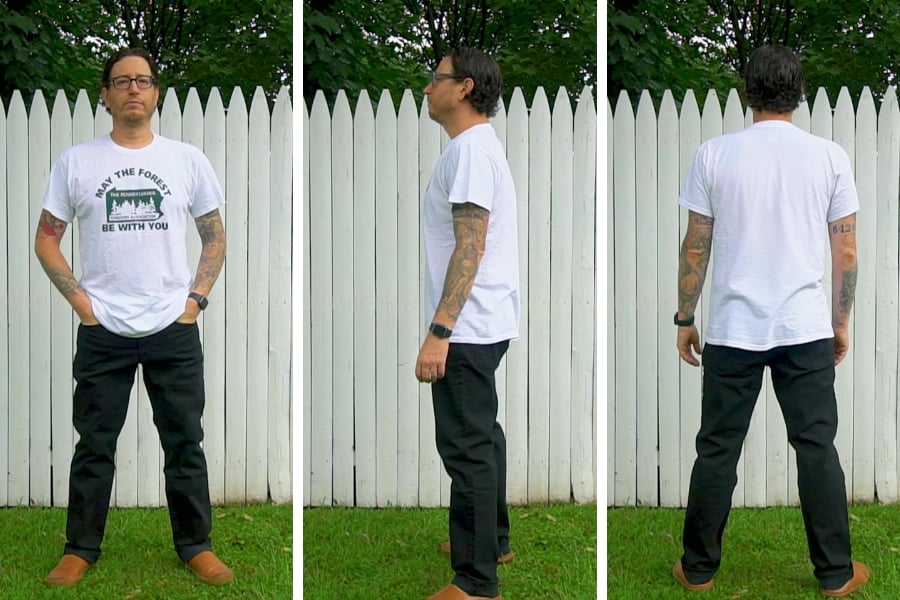
Sizing
A major advantage of Flint and Tinder is that they actually size in specific waist and inseam lengths. Many selvedge brands only offer one or two standard inseam lengths (often 36” or 34”) that you have to get hemmed or cuffed.
While you might want to leave room to cuff and show the selvedge ID, a 36-inch inseam requires massive cuffs at my height (around 5’9”). I much prefer being able to buy a 32-inch inseam, which is rare for denim like this and something for which I’m grateful to Flint and Tinder.
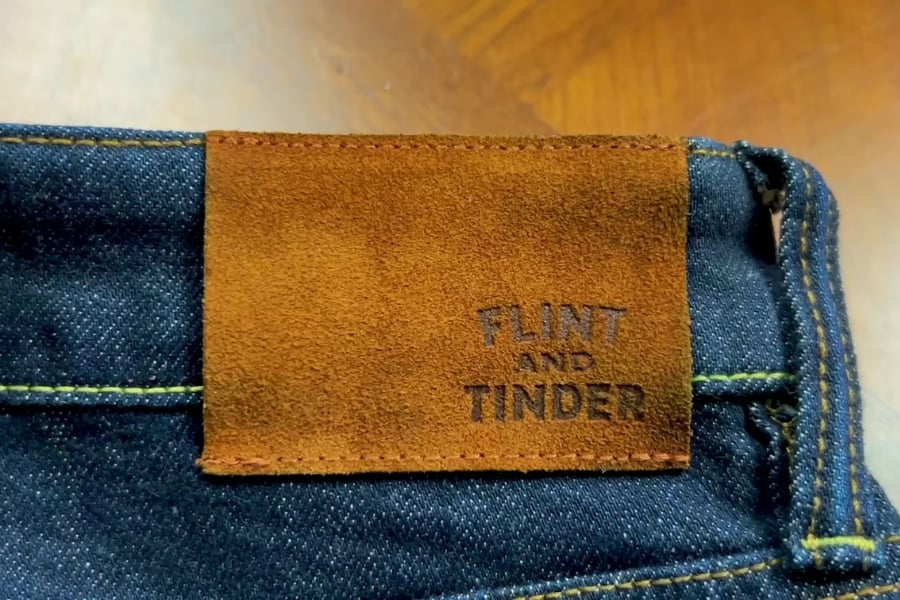
Why Flint and Tinder?
In the early days, my absolute favorite pair of jeans was a dark gray pair of jeans that faded to a very light gray pair of jeans. They were an old pair of Levi 511s that were around 10 years old.
I have had plenty of name-brand jeans over the years that cost quite a bit. Many were just disappointing fast fashion jeans, despite the brand and the price tag. So I have been chasing jeans with the same fit, quality, and durability as those old Levi’s. It felt like Levi’s quality had declined, which pushed me to explore other brands.
That’s when I landed on the Flint and Tinder All-American Stretch. These are probably the closest, in fit and in quality, to Levi’s of at least a decade ago.
When I put on my slim-fit All-American Stretch for the first time, I knew I had found the right jeans. I could tell the difference immediately. So, the Flint and Tinder All American Stretch jeans are still my favorite among my growing collection of selvedge denim. These things just fit really, really nice.
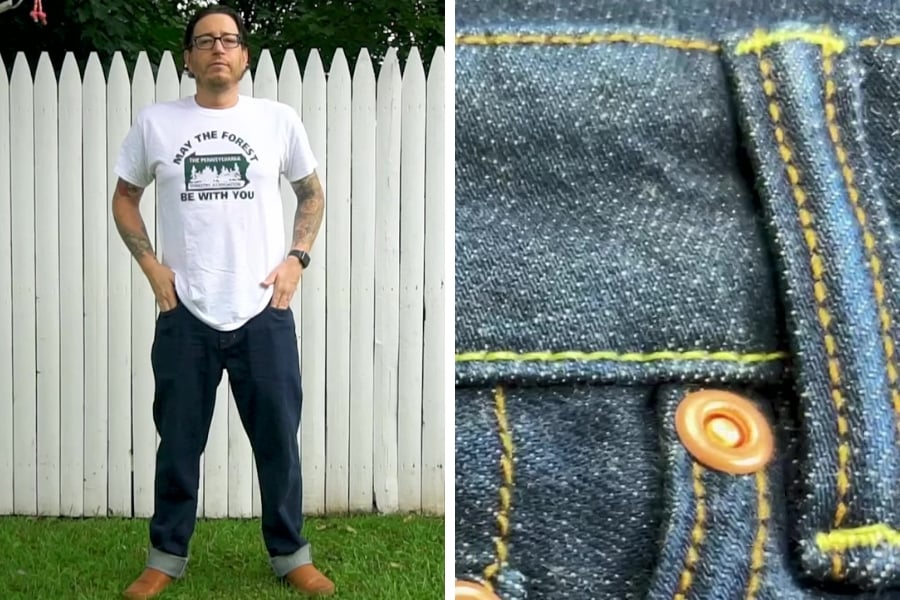
Are They Worth It?
At their different price points, each of the three jeans in this comparison offers a different value. Compared to the typical $120-$130 mark for good selvedge jeans, the $98 Everyday Stretch offers a solid budget option. On the other hand, the All-American provides the USA-made comfort and versatility. And finally, Japanese Stretch gets you the full premium selvedge experience at $198.
My personal favorite is the All-American Stretch: the fabric is a good balance of hefty and comfy, there’s a good range of fits, and the price is remarkable for American made.
Wrapping Up
That’s my quick breakdown of Flint and Tinder’s stretch jeans. Whatever your budget and no matter your preference for USA-made, Japanese selvedge, or as-cheap-as-possible, they’ve got a jean for you. I think they could use more transparency around the fabric sourcing for the All-American jeans, but they’re still my favorite — the price makes up for that issue, in my opinion.
If you enjoyed this breakdown, please don’t forget to like, comment, share, and subscribe on my YouTube channel!

